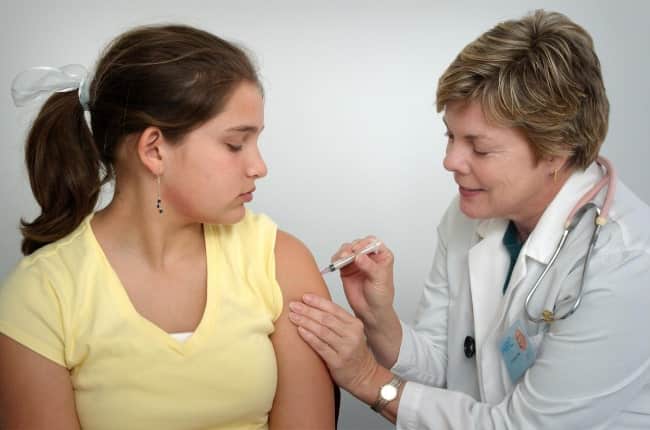The majority of cervical cancer cases come from two particular types of HPV: HPV 16 and 18.
Viruses are all around us and can be contracted in any number of different ways. They vary from the common cold to hepatitis to HPV.
HPV is contracted from skin-to-skin contact, usually during sexual intercourse, and different strains can potentially lead to genital warts, cervical dysplasia or, eventually and in the very worst case, cancer.
It can be overwhelming to know what to pay attention to and when to elevate your concern in discussing HPV strains. Especially as there are upwards of 100 different strains of the virus.
These strains are not all of the same risk in terms of potential symptoms developing from them, the majority are low risk strains with most people possibly having the virus and never seeing any untoward effects from it.
There are, however, higher risk strains too. In fact, many high-risk strains are also symptom-less up until the point at which they cause serious health problems, like cervical cancer.
We want to make this easy for you to understand, and also to know what moves to make, if you end up being affected.
Understanding the HPV Picture

Before we get into the types of strains it’s important to remember that infection with HPV is very common.
The Centers for Disease Control and Prevention estimates that there are 6.2 million new infections each year in the United States. Nearly all sexually active men and women will have had a type of HPV infection at some point in their lives.
Most people go about life symptomless, but in some men and women, the infection persists.
The goal of Papillex is to help to improve the body’s immune response and correct nutritional deficiencies that can contribute to persistent HPV infections. Our naturopathic doctors have created this product out of a need to help people respond to HPV infections naturally using an evidence-based approach.
How Is It Passed On?
Transmission of HPV occurs through sexual skin-to-skin contact.

While it is most commonly spread through vaginal or anal sex, it can also be spread through oral sex.
The Centers for Disease Control and Prevention estimates that there are 6.2 million new infections each year in the United States. Nearly all sexually active men and women will have had a type of HPV infection at some point in their lives.
In most people, the immune system is able to clear the infection on its own in a short time, so they pass it on unknowingly with no signs or symptoms.
What About the HPV Vaccine?
As higher risk HPV type 16 and 18 are known to cause 70% of cervical cancers; three HPV vaccinations have been developed to help mitigate this virus. All three of the vaccinations available protects against HPV type 16 and 18.

Two of the vaccines also protect against HPV types 6 and 11, which cause anogenital warts, while the third protect against three other higher risk strains of HPV that cause 20% of cervical cancers.
While these vaccines are not meant to treat HPV infections or associated symptoms and diseases, such as cervical cancer, they care very effective in prevention. These vaccines have been proven with clinical trials to be safe and effective in preventing HPV infections.
Men and women have been approved for the vaccination, with a World Health Organization recommendation for girls aged 9 to 14 to receive the vaccine. Some countries have begun approval for boys of this age to be equally vaccinated to prevent transmission.
As the vaccine is not useful for treatment, prevention is optimal at an age before sexual activity.
The Strains
HPV 2 and 4: The types of HPV virus strains that many have experienced are strains 2 and 4, responsible for the “common wart.” These are the kind of warts that often occur on our hands or feet that are easily treated at your medical doctor’s office or with simple over the counter products.
The more concerning, higher risk types of HPV are sexually transmitted. There are approximately 40 of those strains; four of these strains are the most concerning because of their ability to cause genital warts and cervical cancer.
Here’s the breakdown on those 4 types:
HPV Types 6 and 11
6 and 11 are the most common cause of genital warts, and account for approximately 90% of HPV genital wart infections. These strains are rarely associated with cancer. Warts may appear within several weeks after sexual or intimate skin to skin with someone who is infected with HPV type 6 or 11.
HPV Types 16 and 18
These are called high risk because they can cause cancer in both men and women. Most cases of cervical cancer come from these two particular strains; these strains can also lead to throat cancer, anal cancer, penile cancer, or cervical cancer.
How Will I Know If I Have HPV?
Receiving routine pap smears is the best way to be proactive about HPV.
Most women do not ever reach the stage of cervical cancer through HPV infections, as cell progression is caught easily in pap tests, and preventative measures can be taken.
The recommendation for disease control and prevention is to get one pap test every three years to keep an eye on your cervical cells, and more frequently if you have ever had an abnormal pap test.

Some doctors will recommend getting a pap smear once a year through their experience of seeing patients testing positive following a pap one year ago.
Other professionals have even recommended getting anal pap smears or anoscopies to screen for anal cancer, as anal cancer from HPV will not show up with changes in cervical cells.
This is a highly recommended option for sexually active males who have anal sex.
What if I Test Positive for HPV 16 or 18?
Testing positive on HPV tests for types 16 or 18 doesn’t mean that you will develop cervical cancer, but it does mean that any dysplasia found on a pap test carries a higher risk of becoming cancerous.
If you test positive for a higher risk strain, your doctor may take a “wait and see” approach and simply suggest more frequent pap tests, because your body may clear the infection on its own.

This approach is safe – it can sometimes take 15 to 20 years for high risk HPV types to cause cervical cancer.
If your pap test shows more severe abnormalities, there are additional measures that your doctor can take to prevent cancer from developing, including LEEP, cryotherapy, or photodynamic therapy.
here are many scenarios where high risk HPV does not progress into cervical cancer, and your healthcare provider can help you find the approach that’s right for you.
What Can I Do While I “Watch and Wait”?
Begin making lifestyle changes right away to prevent further progression!
This is as easy as changing your diet, exercising, sleeping well, decreasing stress, cutting out smoking, excessive alcohol consumption, and other toxic components of your life.
This will all help to support your body and immune system in fighting an HPV infection before it gets worse.

Papillex is a nutrient-rich supplement designed to optimize your immune system’s response to HPV.
Positively diagnosed people with weakened immune systems are more susceptible to developing cervical cancer, shortening the 15 to 20-year margin down to 5 to 10 years.
By optimizing your natural immunity and replacing missing and low nutrients, Papillex helps you to create an inhospitable environment for HPV to live.
Find out more about the Papillex 60 Capsule Bottle and how it works!
Our recommendation is: Why watch and wait, when you can be proactive? Read our blog for ways that you can be proactive now through diet, lifestyle and targeted supplementation.





